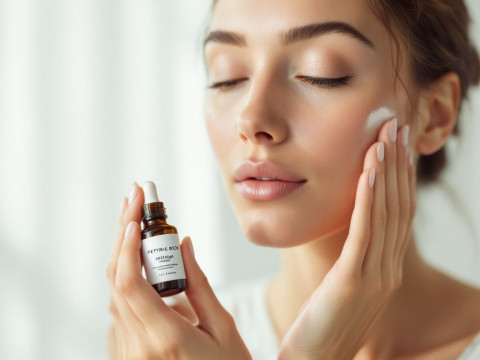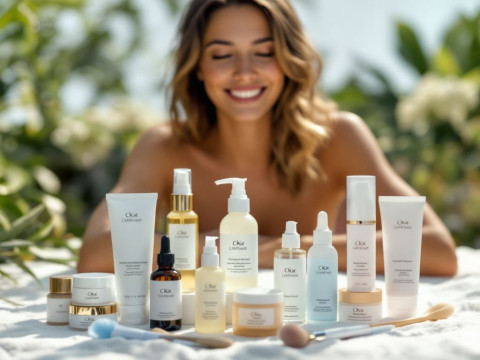Ever noticed how life on a film set is this intensely focused flurry of creativity, artistry, and… dust? That’s right—those powerful production lights don’t just brighten an actor’s expression but can also put a spotlight on often unnoticed concerns like skin protection. When you’re part of the tight-knit team that brings stories to life on screen, the demand on your energy, not to mention your skin, can be incredibly high. If you’ve ever found yourself wondering what happens to skin when it’s exposed to long shooting hours, unpredictable weather, or the everyday hustle of construction-like activity in set design, sit tight. We’re about to dive into how you can keep your skin healthy and fresh, even in the midst of all the action.
The Drama of Set Design and Its Impact on Skin
Life on set is captivating—and fast-paced. Set designers, like you, find themselves in environments spanning from city rooftops to deserts, often scurrying to create magic within tight deadlines. It’s inspiring. BUT, let’s face it, the constant exposure to lights, pollutants, and outdoor elements can turn even the steadiest skin into a scene right out of a horror flick.
Imagine being under the bright lights for countless hours. That intense illumination can dry the skin faster than a propane heater can warm a set. Meanwhile, switching environments—from a dry studio set to a humid on-location shoot—can spell confusion for your skin. Throw in some stray sawdust or paint fumes from construction exposure, and you’ve got a recipe for skin screaming for some TLC.
Feeling overwhelmed? Don’t worry, I’m here to break it all down with some simple, relatable suggestions. Trust me, your skin will thank you.
Understanding Your Skin On Set
How Production Conditions Affect Skin
You might be surprised at how the seemingly unrelated aspects of production work affect your skin. Bright set lights, for instance, aren’t just exhausting to your eyes; their heat can cause sweat and oil production to skyrocket while simultaneously dehydrating your skin.

There’s also the gritty aspect—construction exposure. When you’re knee-deep in crafting those elaborate sets, anything from plaster dust to paint chemicals can end up clogging your pores. This kind of exposure can exacerbate acne or cause annoying rashes.
Staging a Rehearsal: Know Your Skin Type
Before we rally up and march into the solutions, let’s play detective on your skin type. Understanding this will really help personalize the care you provide your set-stressed skin.
Skin types roughly fit into a few categories: oily, dry, combination, sensitive, and normal. Take a moment, after a warm wash, to notice how your skin feels without any product on it. Oily? Dry? A mix of both? This little exercise is your rehearsal to find the script that your skin naturally follows so we can write it a better ending.
The Take-Action Script for Effective Skin Care
Invest in the Right Products
An artist is only as good as their tools! Well, the same goes for skin care. You’re dealing with specific challenges, so opt for products that work just as hard as you do.
- Gentle Cleanser: Make sure your cleanser is gentle yet effective at removing debris and built-up oils without stripping your skin away. If you dive into a day’s work with residue from the last—spoiler alert—it’s an encore no one asked for.
- Moisturizer with SPF: Ah, the hero of the story! Because protecting your skin from UV rays is just as important indoors as it is outdoors, go for a moisturizer that includes SPF to ward off both drying incandescent light effects and the dastardly sun.
- Antioxidant Serum: Incorporated serums rich in antioxidants can be absolute game-changers, helping to combat oxidative stress from pollution exposure on outdoor sets or in workshops.
Daily Routine: The Narrative Arc

Building a routine might seem mundane in the world of unpredictable shoots, but consider it the structure—like a good screenplay—that your day needs.
- A.M. Routine: Start with a cleanse to push yesterday off the set, a swipe of antioxidant serum to armor those skin cells, and SPF-laden moisturizer. Apropos of sound checks and light rigs, your skin will be poised for action.
- During Production: Throughout the day, pursue touch-ups when needed—not just for stage makeup but skin protection. A gentle facial mist or oil-absorbent sheets can be perfect for those bright light close-ups.
- P.M. Routine: Cap your day with a thorough cleansing to cut the day’s buildup. Consider a non-greasy night cream or a hydrating mask now and then for maintenance and recovery.
Trust your instincts here—routines are similar to filming—it’s all about what quietly works best with your natural shape.
On Set Quick-Saves
Let’s talk about those notorious unexpected plot twists—the last-minute need to shoot an extra scene after a full day or a set design emergency that keeps you outdoors longer. These aren’t schedule-friendly, and they won’t care about your repertoire of standard prep.
Here’s a director’s cut: keep a small survival kit handy. Include mini versions of your go-to moisturizer, blotting papers, and maybe a soothing lip balm. Remember what they say on set—preparation is half the craft.
Reversing Set-Induced Damages

The Filler Scene: Hydration, Nutrition, and Rest
Given the demands of working on a set, sometimes you’ll need to focus on recovery more off-set than on. Stock up on water just like craft services is stocked with snacks, sneaking in hydration breaks regularly. Your skin acts as a mirror to what you eat too. Fresh foods, especially those rich in omega fatty acids and antioxidants, contribute immensely to skin regen and vigor.
And of course, sleep—basically the low budget but highly effective starring moment for repair and rejuvenation.
Corrective Cuts: When to Seek Help
Sometimes despite wrangling all the foundational elements, your skin demands a sequel—nothing too dramatic, but enough to call in some external help. It might mean seeing a dermatologist if persistent issues like rash, severe acne, or flare-ups develop. They can offer tailored advice or treatments you’ve not considered.
The End Scene: A Community of Care
People working in the production realm on intense sets know the spirit of teamwork. Collaboration isn’t limited to scripts and scenes; share experiences or swaps with teammates about what’s working in their skin routine. Knowledge spread over a bustling communal coffee break backstage or between takes can unlock solutions that stay hidden in plain sight.
As we pull the shade on today’s act, remember that the secret formula lies in consistency, observation, and adaptation. Life on set is unpredictable, look out for our one’s skin must always play lead role—as the epicenter of all expression.
And, when your skin plays its part well, trust me, you’ll hear applause. Now go infuse that piece of artistry you bring, with just as much care for yourself. Skin protection on set? It’s your new unwritten contract.
Frequently Asked Questions About Skin Protection
How Do I Determine My Skin Type for Effective Skin Protection?
Determining your skin type is crucial for effective skin protection. The most common skin types are oily, dry, and combination skin. Oily skin is often shiny and can be caused by stress, humidity, genetics, or hormones. Dry skin is typically weather-induced and may appear red or flushed. Combination skin is a mix of both oily and dry skin. Knowing your skin type helps you choose the right products and treatments[1][5>.
What Skincare Routine Should I Follow for My Skin Type to Ensure Proper Skin Protection?
For oily skin, use an oil-free and non-comedogenic cleanser, moisturize daily, and apply sunscreen. For dry skin, use a cleanser with hyaluronic acid, an alcohol-free toner, and a moisturizer to maintain hydration. For combination skin, balance your routine between the recommendations for oily and dry skin. Sunscreen should be used daily to protect against sun damage[1][5>.
How Often Should I Apply Sunscreen for Adequate Skin Protection?
Sunscreen should be reapplied every two hours, and more frequently if you have been swimming, sweating heavily, or drying off with a towel. It is also important to use a broad-spectrum sunscreen that protects against both UVA and UVB rays, even on cloudy days[3>.
Can I Use Sunscreen on All Skin Types, Including Sensitive or Dark Skin?
Yes, sunscreen can be used on all skin types, including sensitive and dark skin. For sensitive skin, choose a non-comedogenic, oil-free, lightweight formula. Dark skin, despite producing more melanin, still requires UV protection to prevent sunburn and skin cancer. Specialized sunscreens for children and sensitive skin are also available[3][5>.
References










